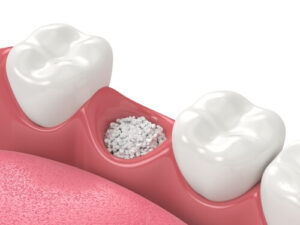Tooth extractions and implants are crucial parts of dental care, often necessary when severe decay, damage, or a dental disease has taken a toll on your oral health. Tooth extractions involve the removal of the entire tooth, including the root, to alleviate pain, prevent infection, or make room for orthodontic treatment. This procedure, although common, leaves a space in your mouth, which can lead to several complications, such as tooth shifting, bone loss, and difficulties with chewing or speaking. This is where dental implants come into play. Dental implant surgery uses artificial tooth roots, typically made of titanium, that provides a strong foundation for the replacement tooth. They’re considered the gold standard for missing tooth replacement due to their durability, functionality, and aesthetic appeal. But, one may wonder: how soon after tooth extraction can I get an implant? It’s a common question, and the answer isn’t always straightforward, as it largely depends on individual circumstances, such as the state of the jawbone and overall oral health.
What to Expect During the Healing Process After a Tooth Extraction
After tooth extraction, your body immediately starts the healing process. Here’s what you can generally expect during this period:
- Blood clot formation: A blood clot typically forms in the socket shortly after extraction. This clot serves as a protective layer for the underlying bone and nerve endings in the empty tooth socket and aids in the healing process.
- Swelling and pain: It’s normal to experience some swelling and discomfort after an extraction. Applying an ice pack to the affected area in 15-minute intervals can help minimize swelling. Your dentist might also prescribe painkillers to manage discomfort.
- Bleeding: Minor bleeding or oozing may occur during the first 24 hours after the extraction. If excessive or prolonged bleeding occurs, it’s important to contact your dentist or oral surgeon.
- Healing of the gum tissue: After about a week or two, the new gum tissue should start to grow into the socket. Over time, this tissue will become smoother and look more normal.
- Bone regeneration: This is the longest phase of the healing process and may take several weeks to months. During this time, new bone tissue will fill the socket and eventually close the area where the tooth was removed.
It’s important to follow aftercare instructions from your dentist throughout this healing process, such as avoiding smoking, not disturbing the blood clot, and adhering to a soft food diet for a few days. Any signs of infection, like persistent pain or swelling after a few days, should be reported to your dentist promptly. If that’s part of your treatment plan, the healing process is vital in preparing the site for a future dental implant.
Identifying When You can get a Dental Implant After a Tooth Extraction
The timeline for getting a dental implant after tooth extraction can vary greatly depending on the individual’s oral health and jawbone condition. Here are the general scenarios:
Immediate Placement: In some cases, the dental implant can be placed immediately after the tooth extraction in the same visit. This is usually possible when there’s enough healthy bone in the jaw and no sign of infection around the extraction site.
- Early Placement: If there’s moderate bone loss or infection present, the dentist may recommend waiting a few weeks for the area to heal before placing the implant. Typically, this wait time is about 2-3 weeks after the tooth extraction.
- Delayed Placement: In cases where there’s significant bone loss, a bone graft may be required. The graft creates a solid base for the implant. After a bone graft, you’ll typically need to wait several months for the area to heal before placing the implant.
Remember, these are only general guidelines; the exact timing will depend on your circumstances. It’s crucial to have a thorough consultation and follow the advice of your dental professional for the best outcome.
Advantages of Getting an Implant Soon After Extraction
Getting a dental implant soon after tooth extraction offers several advantages, although the appropriateness of immediate dental implant placement depends on individual oral health circumstances. Here are some key benefits:
- Preservation of Bone Density: After extraction, the jawbone can resorb or shrink, impacting the bone’s density and volume. Immediate implant placement can help stimulate the bone, preserving its density and structure, much like natural teeth do.
- Fewer Surgical Procedures: When an implant is placed immediately after extraction, it often means fewer surgical procedures. This could mean less overall healing time and potentially less discomfort.
- Aesthetics and Function: An immediate implant can restore aesthetics and function quicker. This is particularly important if the extracted tooth is in a visible mouth area. An implant procedure will also help maintain the alignment of surrounding teeth, as they may shift when there’s a gap.
- Time Efficiency: The entire process, from tooth extraction to implant placement, can be considerably shorter with immediate placement, reducing the overall treatment time.
However, immediate implant placement isn’t always possible or the best option. Factors like infection, insufficient bone quality or quantity, or systemic health conditions may mean a delay is necessary. Always consult with your dental professional to determine the best treatment plan for your specific needs.
When to Avoid Getting an Implant Right After Extraction
While immediate implants have their advantages, there are circumstances when it might be best to wait before proceeding with an implant after tooth extraction. These situations include:
- Infection: If the tooth being extracted is infected, immediately placing an implant may not be a good idea. The implant could become infected, leading to complications like implant failure. Your dentist will likely treat the infection first before considering implant placement.
Insufficient Bone: The extracted tooth site must have enough healthy bone to support the implant. If the bone quality or quantity is not adequate, a bone graft may be necessary to create a strong foundation for the implant, which would delay implant placement.
- Complex Extractions: In the case of complex extractions, such as impacted wisdom teeth or complicated root fractures, healing might take longer, and it might be better to postpone the implant placement.
- Systemic Health Conditions: Certain systemic conditions like uncontrolled diabetes, immune disorders, or conditions that affect bone healing can influence the decision to delay tooth implant placement.
- Smoking: Smokers generally have a slower healing rate, and the risk of implant failure is higher in smokers. Dentists often advise patients to quit smoking before proceeding with dental implants.
Every patient’s situation is unique, and the decision to place an implant immediately or delay it will be based on a thorough evaluation by your implant dentist or oral surgeon. They will consider all these factors, along with your personal oral health history and preferences, to ensure the best outcome.
Tips for Maintaining Oral Health During Recovery From a Tooth Extraction
Maintaining oral health during tooth extraction surgery recovery is vital to promoting healing and preventing complications. Here are some tips to help ensure a smooth recovery process:
- Follow Aftercare Instructions: Your dentist will provide specific instructions for aftercare, which might include how to change the gauze, the recommended diet, and how to rest properly. Make sure to follow these instructions closely.
- Manage Pain and Swelling: Use prescribed painkillers as instructed by your dentist. To help control swelling, apply an ice pack to the affected area for 15-minute intervals.
Maintain Oral Hygiene: Continue to brush and floss your teeth, but be gentle around the extraction site to avoid dislodging the blood clot or damaging the healing gums. Starting 24 hours after surgery, you can also rinse with a warm salt water solution (1/2 teaspoon of salt in 8 ounces of water) several times a day to soothe the area and kill bacteria.
- Stay Hydrated and Eat Soft Foods: Drink plenty of water, and stick to soft foods like yogurt, pudding, and soup for the first few days. Avoid hot, crunchy, or hard foods that might irritate the extraction site.
- Avoid Harmful Habits: Do not smoke or use tobacco products, as they can slow healing and increase the risk of complications. Avoid drinking through a straw for at least 24 hours as the sucking action can dislodge the blood clot and delay healing, a condition known as a dry socket.
- Rest and Recover: Get plenty of rest. Avoid strenuous activity for the first few days, which can lead to unnecessary bleeding.
- Monitor Your Healing: Pay attention to your body and any signs that healing might not progress as expected. Persistent pain, swelling, bleeding, or signs of infection like fever or redness should be reported to your dentist immediately.
Remember, the better care you take of your oral health post-extraction, the smoother your path to recovery will be, setting the stage for successful implant placement if that’s part of your treatment plan. If you need help, you can contact our Sydney CBD clinic today.
References:
https://www.news-medical.net/health/Tooth-Extraction-Risks.aspx
https://www.perfectteeth.com/pull-your-tooth-or-save-it/
https://www.fda.gov/medical-devices/dental-devices/dental-implants-what-you-should-know
https://www.periodontal.com/how-long-do-dental-implants-last/
https://www.mayoclinic.org/tests-procedures/dental-implant-surgery/about/pac-20384622


 Immediate Placement: In some cases, the dental implant can be placed immediately after the tooth extraction in the same visit. This is usually possible when there’s enough healthy bone in the jaw and no sign of infection around the extraction site.
Immediate Placement: In some cases, the dental implant can be placed immediately after the tooth extraction in the same visit. This is usually possible when there’s enough healthy bone in the jaw and no sign of infection around the extraction site. Insufficient Bone: The extracted tooth site must have enough healthy bone to support the implant. If the bone quality or quantity is not adequate, a bone graft may be necessary to create a strong foundation for the implant, which would delay implant placement.
Insufficient Bone: The extracted tooth site must have enough healthy bone to support the implant. If the bone quality or quantity is not adequate, a bone graft may be necessary to create a strong foundation for the implant, which would delay implant placement. Maintain Oral Hygiene: Continue to brush and floss your teeth, but be gentle around the extraction site to avoid dislodging the blood clot or damaging the healing gums. Starting 24 hours after surgery, you can also rinse with a warm salt water solution (1/2 teaspoon of salt in 8 ounces of water) several times a day to soothe the area and kill bacteria.
Maintain Oral Hygiene: Continue to brush and floss your teeth, but be gentle around the extraction site to avoid dislodging the blood clot or damaging the healing gums. Starting 24 hours after surgery, you can also rinse with a warm salt water solution (1/2 teaspoon of salt in 8 ounces of water) several times a day to soothe the area and kill bacteria.



